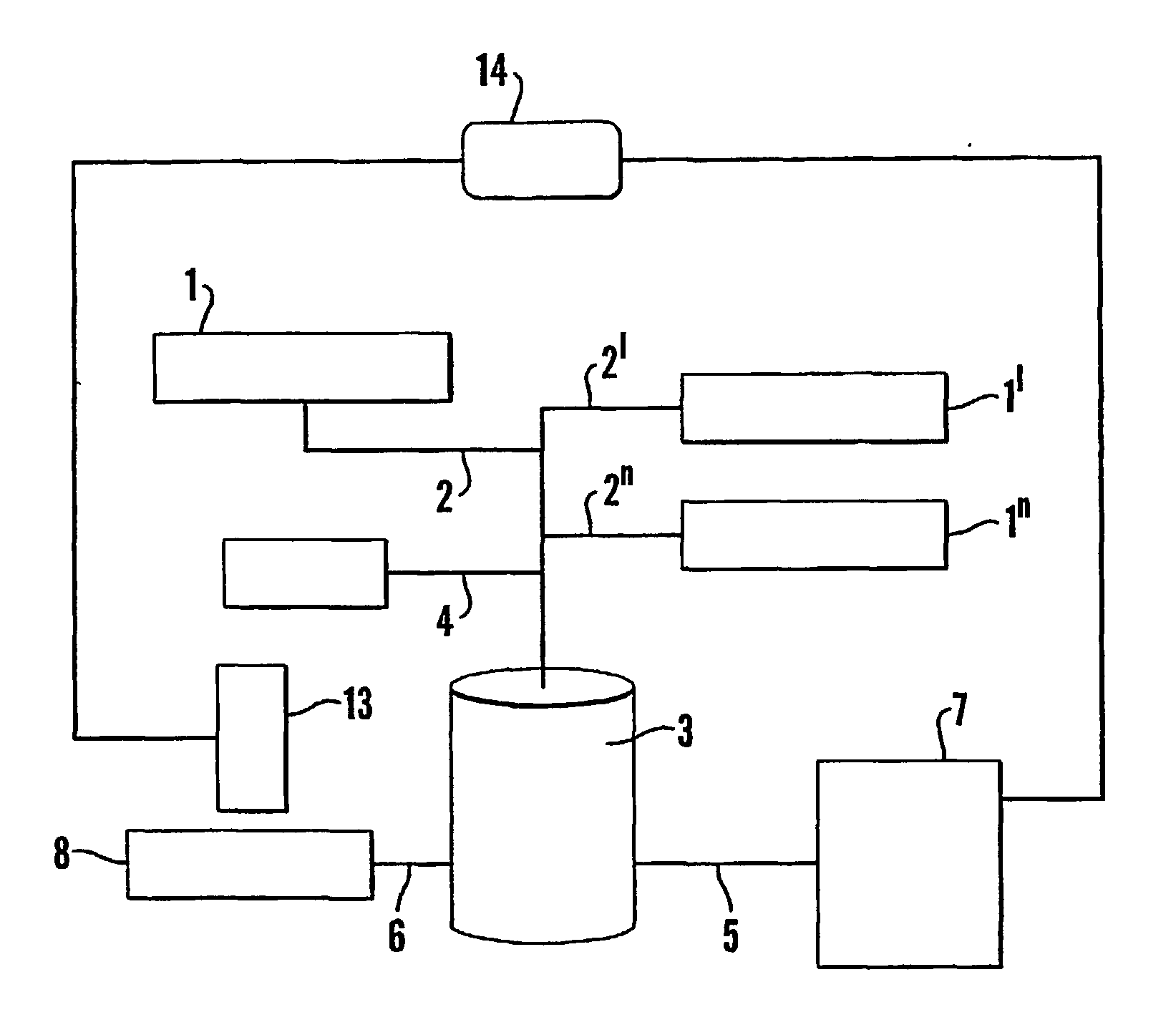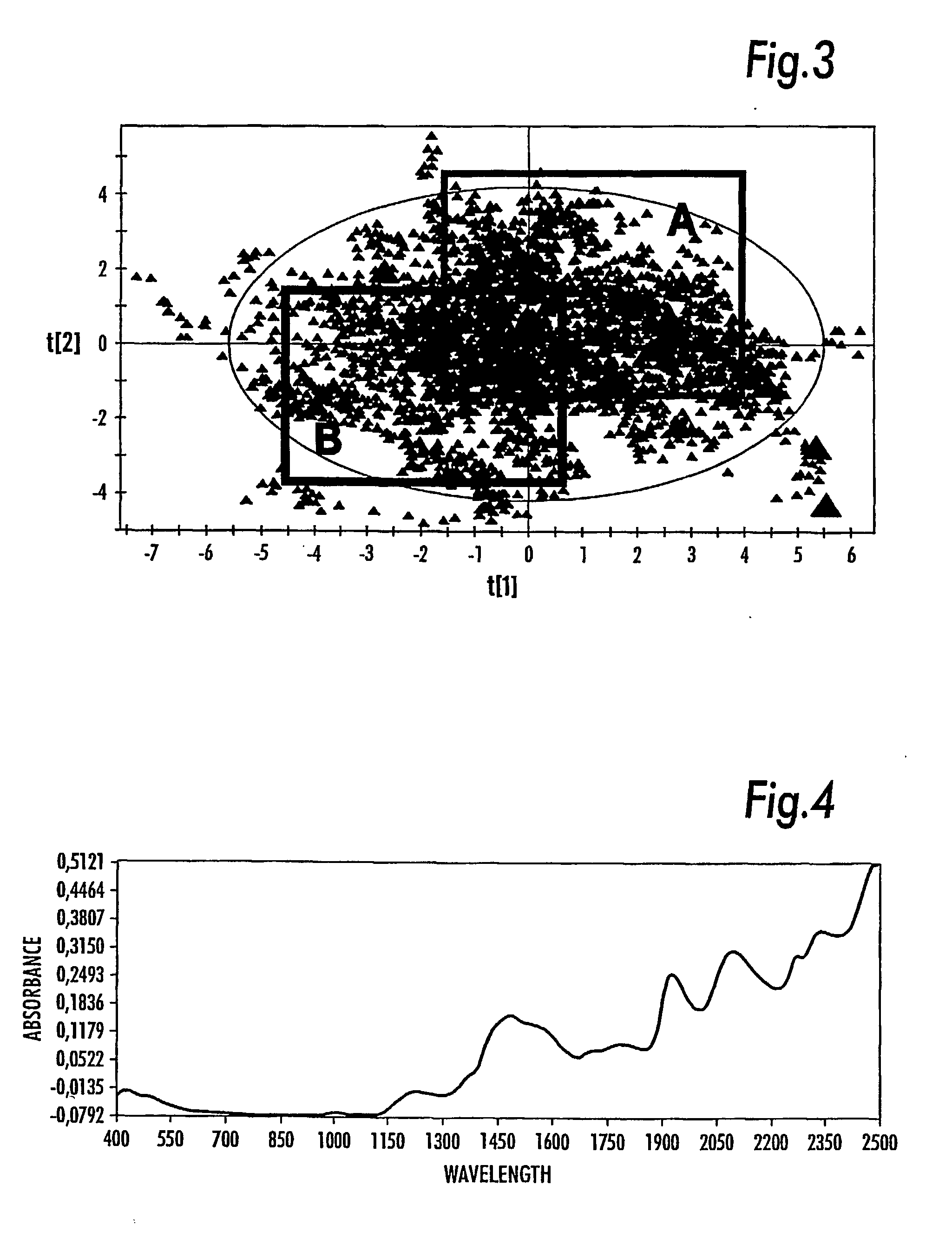Method in connection with the production of pulp, paper or paperboard
- Summary
- Abstract
- Description
- Claims
- Application Information
AI Technical Summary
Benefits of technology
Problems solved by technology
Method used
Image
Examples
Embodiment Construction
[0047] Elaboration of Calibration Model--Example from Off-Line Study
[0048] NIR spectroscopy and fibre analysis are used together with multivariate data analysis (PLS) to determine the tensile index and beating requirement of fully bleached sulphate pulps.
[0049] Sample
[0050] The reference sample consisted of 29 fully bleached pulp sheets that were removed following the drying machine at a chemical sulphate pulp plant. The sample material was divided up so that 16 samples were used to form a calibration set, while the remaining 13 samples were used to form an off-line test set. Measurements using NIR spectroscopy, measurements with a fibre analyser and traditional assessments of pulp properties were carried out on all samples.
[0051] NIR Measurements
[0052] NIR measurements were carried out using an NIRSystems 6500 instrument that is equipped with a transport module and a test cell with a surface of approx. 60 cm.sup.2. The measurements were performed with reflectance directly on the un...
PUM
 Login to View More
Login to View More Abstract
Description
Claims
Application Information
 Login to View More
Login to View More - R&D
- Intellectual Property
- Life Sciences
- Materials
- Tech Scout
- Unparalleled Data Quality
- Higher Quality Content
- 60% Fewer Hallucinations
Browse by: Latest US Patents, China's latest patents, Technical Efficacy Thesaurus, Application Domain, Technology Topic, Popular Technical Reports.
© 2025 PatSnap. All rights reserved.Legal|Privacy policy|Modern Slavery Act Transparency Statement|Sitemap|About US| Contact US: help@patsnap.com



